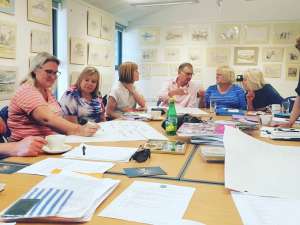Description
Objects are increasingly being used in oral history and reminiscence work. They can be used in one to one interviews as a way of prompting the memory of an interviewee and this can be an effective way of enabling an interviewee to talk more freely and personally about the subject matter. When personal recollection is taking place in groups, more general objects can be used to stimulate discussion within the group.
This training course grows from the fact that learning by engaging with objects can be a powerful experience. Whether you are a school teacher, a museum professional, a learner, or simply intrigued by this method of teaching, there will be something here for you.
Objects to use with reminiscence or in museums and education can form the focus of family stories. Stories may trigger memories and feelings in all age groups, but especially in those presenting with dementia who might find it harder to articulate their experiences.
We explore both museum object handling in this course and the balance between protecting the object and facilitating access for learning. We also look at more informal care settings, so if you can’t get access to that rare bone china tea set for an object handling session there are many wonderful things available that are robust enough for the most tactile of learning events. It is possible to find some amazing objects to work with. Unusual objects, quirky things from charity shops, souvenirs from far distant lands, and commonplace household objects easily work too.
By learning about and engaging with new objects we are able to stimulate emotions and feelings and bring these out and improve people’s sense of wellbeing.
Material objects—things, stuff, artefacts – have been part of human development from the moment we are born and are with us through our entire lives (Camic, 2010)




